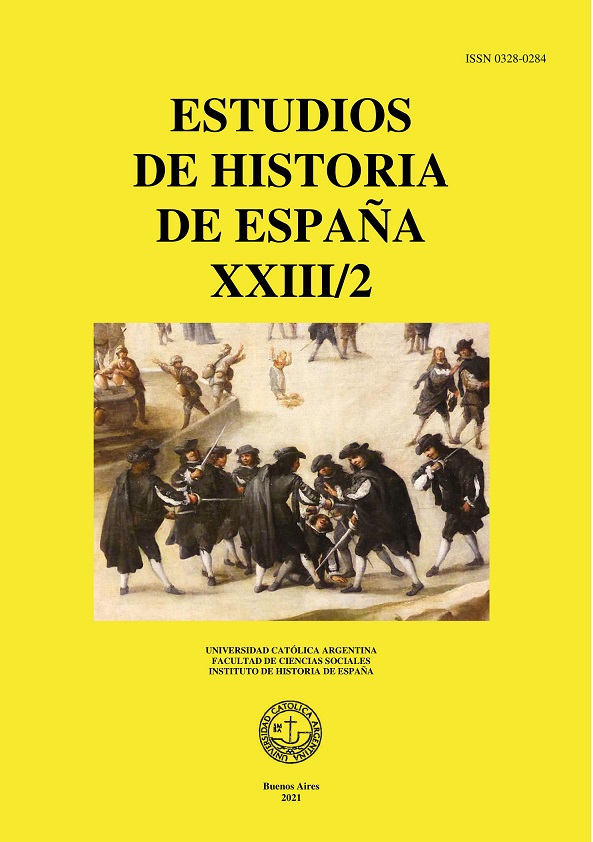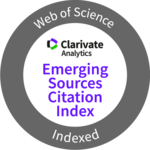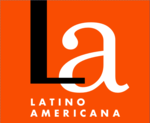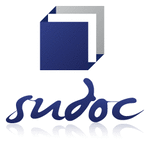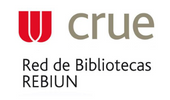ORTODOXIA CRISTÃ E APOLOGIAS ESOTÉRICAS NA ESPANHA DE CARLOS V. ANÉIS, MAGIA ASTRAL E MAGIA NATURAL EM LA SILVA DE VARIA LECCION DE PEDRO MEXÍA (1540)
DOI:
https://doi.org/10.46553/EHE.23.2.2021.p140-158Palavras-chave:
Anéis, magia astral, magia natural, Pedro Mexía, esoterismoResumo
A abordagem do esoterismo espanhol no inicio da era moderna continua a ser notavelmente marginal entre os especialistas. No cruzamento da história cultural e da história política, investigamos tanto as características das práticas e representações esotéricas na Espanha do século XVI quanto as lutas representacionais entre os discursos hostis de ortodoxia cristã e a apologética dos esotéricos. Abordamos o estudo de la “Silva de varia lección” (1540) de Pedro Mexía (que seria nomeado em 1548 Cronista Imperial de Carlos V) para enfocar tanto as peculiaridades de sua representação específica dos anéis mágico-astrológicos quanto as características de seu discurso apologético em face do desafio da ortodoxia cristã.
Downloads
Referências
Fuentes primarias
AGUSTÍN DE HIPONA, De doctrina christiana (ed. Bilingüe Obras de San Agustín, Madrid, Biblioteca de Autores Cristianos, 1965).
Albertus Magnus Book of Minerals (ed. D. Wyckoff, Oxford, Clarendon Press, 1967).
De mineralibus D. Alberti Magni, Ratisbonensis Episcopi, Ordinis Praedica torum, opera omnia (ed. A. Borgnet, Paris, apud Ludovicum Vives̀, 1890- 1895).
FRANCISCO PEÑA, Nicolás Eimeric. El Manual de los Inquisidores, Barcelona, Muchnik. 1983.
HEINRICH CORNELIUS AGRIPPA, De occulta philosophia libri tres (1510), Lugduni, apud Godefridum & Marcellum Beringos fratres, 1550.
JOHANNES ESCHUID, Summa astrologie iudicialis, Venetiis, Francisci Bolani, 1489.
JUAN DE HOROSCO Y COVARRUBIAS, Tratado de la verdadera y falsa prophecia, Segovia, Juan de la Cuesta, 1588.
MARSILIO FICINO, De Vita Coelitus Comparanda, 1489 (ed. bilingüe latín–inglés de C. Kaske y J. Clark, Arizona, The Renaissance Society of America, 1998)
NICOLAU EIMERIC, Directorium inquisitorum, Roma, In Aedibvs Pop Rom, 1578.
Les pierres talismaniques. Speculum Lapidum Livre III. Camillo Leonardi (ed. Claude Lecouteux & Anne Monfort, texte, traduction, commentaire et annotations. París, Presses de l´Université de Paris-Sorbonne, 2002).
LOPE DE BARRIENTOS, Tractado de la adivinança (ed. F. Álvarez López, Arte mágica y hechicería medieval. Tres tratados de magia en la corte de Juan II, Valladolid, Diputación de Valladolid, 2000).
PEDRO MEXÍA, Silva de Varia Lección (ed. Américo Castro, Madrid, Cátedra, 1989).
—————, Diálogos o Coloquios (ed. Antonio Castro Díaz, Madrid, Cátedra, 2004).
PEDRO COMESTOR, “Historia Scholástica” (ed. Migne, J. P., Patrología latina, Paris, 1855).
PEDRO CIRUELO, Reprobación de las supersticiones y hechizerías (1538), Barcelona, 1628.
The Life of Apollonius of Tyana, by Philostratus (trad. F.C. Conybeare, LCL., 1912).
Speculum lapidum clarissimi artium et medicine doctoris Camilli Leonardi Pi saurensis (1502; ed. Hamburgo, 1717).
Plinii Secundi Naturalis Historiae Libri XXXVII (ed. L. Jan; C. Mayhoff, 6 vols. Editio stereotypa editionis prioris 1892-1909, Stuttgart-Leipzig, Teubner).
Theophrastus, De Lapidibus (ed. D. E. Eichholz, Oxford, Oxford University Press, 1965).
Bibliografía
BAILEY, Michael, “From Sorcery to Witchcraft: clerical conceptions of Magic in the Later Middle Ages”, Speculum, 76, 4, 2001, 960-990.
—————, Magic and Superstition in Europe. A concise history from Antiquity to the Present, USA, Rowman & Littlefield Pub. Inc., 2007.
BEONIO, Maria; FUMAGALLI, Brocchieri, Le enciclopedie dell’occidente medievale, Turín, Loescher, 1981.
BOUREAU, Alain, Satan the Heretic The Birth of Demonology in the Medieval West (2006), Chicago, University of Chicago Press, 2014.
BUBELLO, Juan, “El aporte de la historiografía francesa actual en torno al centenario debate sobre el concepto de Magia”, en González, María Luz, Problemas de Historia Moderna. Cuestiones historiográficas, tendencias en la investigación, Mar del Plata, UNMdP, 2005, 73-104.
—————, “Esoterismo y política de Felipe II en la España del Siglo de Oro. Reinterpretando al círculo esotérico filipino en El Escorial: Juan de Herrera, Giovanni Vicenzo Forte, Diego de Santiago, Richard Stanihurst”, Veredas da História, III, 2, 2010. Url acceso: https://docplayer.es/ 7324893-V-e-r-e-d-a-s-d-a-h-i-s-t-o-r-i-a.html
—————, “Notas sobre las relaciones entre absolutismo católico, polémicas antimágicas y esoterismo en la España del XVI: el caso de Felipe II y Juan de Herrera”, en González, María Luz, (comp.), Temas y perspectivas de Historia Moderna, Mar del Plata, UNMdP, 2011, 231-241.
—————, “Magia y polémicas antimágicas en la España bajo medieval. Enrique de Villena, su Tratado de fascinación o de aojamiento y los límites de la ortodoxia cristiana”, Revista Prohistoria, 17, 2012, 1-24.
—————, “El ´Arte Separatoria´ (1598) de Diego de Santiago. Un alquimista en la corte de Felipe II”, en González, María Luz (comp.), Historia Moderna: tendencias y proyecciones, Mar del Plata, UNMdP, 2013, 169- 179.
—————, “`Sacando a luz lo oculto en la naturaleza`: astrología y alquimia de Diego de Santiago en la corte de Felipe II”, en González, María Luz (ed.) Historia Moderna. Procesos y representaciones, Mar del Plata, UNMdP, 2014, 189-197.
—————,“Arte separatoria e hijos del arte en las prácticas y representaciones de Diego de Santiago (Sevilla, 1598) y el lugar de España en el Esoterismo Occidental”, Anales de Historia Antigua, Medieval y Moderna, 49, 2015, 79-103.
—————, “Apologética de la alquimia en la corte de Felipe II. Richard Stanihurst y su `El Toque de Alquimia` (1593)”, Magallánica, 2, 4, 2016, 95-117.
—————, “Esoterismo y religión en la España del Siglo XVI. Stanihurst, de Santiago y la defensa de la alquimia”, Reflexão, 42, 2, 2017, 199-211.
—————, “Cultura y política en la España temprano-moderna: la defensa de la alquimia por Richard Stanihurst y Diego de Santiago en la corte de Felipe II”, en AAVV. Estudios en Historia Moderna desde una visión Atlántica, La Plata, UNLP, 2017b, 551-581.
—————, “Some remarks on the study of the Cultural History of Western Esotericism in Latin America”, Rehmlac, 12, 1, 2020, 219-240.
—————, “Magia natural y astrología merced al uso de anillos. Apropiación de los Antiguos, esoterismo y ortodoxia cristiana. Pedro Mexía y su Silva de varia lección (1540)”, en González, María Luz (ed.), Historia Moderna. Nuevos enfoques, nuevas perspectivas, Mar del Plata, UNMdP, 2019, 311-319.
BURUCÚA, José E., Corderos y elefantes: la sacralidad y la risa en la modernidad clásica. Siglos XV-XVIII, Buenos Aires-Madrid, Miño y Dávila, 2001.
CAMPAGNE, Fabián, Homo catholicus, homo superstitiosus. El discurso antisupersticioso en la España de los siglos XV a XVIII, Madrid-Buenos Aires, Miño y Dávila, 2002.
CARMODY, Francis J., The astronomical works of Thabit Ibn Qurra, Berkeley, University of California Press, 1960.
CASTRO, Américo, Pedro Mexía, Silva de Varia Lección, Madrid, Cátedra, 1989 (Introducción).
CHARTIER, Roger, El mundo como representación, Barcelona, Gedisa, 1992.
CLOUSTON, W. A., “On the Magical Elements in Chaucer’s Squire’s Tale” en John Lane’s Continuation of Chaucer’s Squire’s Tale (ed. from the original Ms. Version of 1616), F. J. Furnivall, Chaucer Society, 2nd. Series —23 and 26—, London, 1888-1890.
COLLINS, David, “Albertus, Magnus or Magus? Magic, Natural Philosophy, and Religious Reform in the Late Middle Ages”, Renaissance Quarterly, 63, 1, 2010, 1-44.
—————, “Scholasticism and high medieval opposition to magic”, en Page, Sophie; Rider, Catherine (eds.), The Routledge History of Medieval Magic, London, Routledge, 2019, 461-475.
COPENHAVER, Brian, “Scholastic Philosophy and Renaissance Magic in the De Vita of Marsilio Ficino”, Renaissance Quarterly, 37, 4, 1984, 523-554.
—————, “Renaissance Magic and Neoplatonic Philosophy: `Ennead` 4.3- 5 in Ficino`s `De Vita Coelitus Comparanda`”, en Garfagnini, Gian (a cura di), Marsilio Ficino e il retorno di Platone., Firenze, Leo S. Olschki Ed., 1986, 351-369.
CRAIG, Cynthia, “Enchantment and Disenchantment: A Study of Magic in the Orlando Furisoso and the Gerusalemme Liberata”, Comitatus: A Journal of Medieval and Renaissance Studies, 19, 1, 1988, 20-45.
DAVIES, Owen, Grimoires. A History of Magic Books, Oxford–New York, Oxford University Press, 2009.
DE MARTINO, Ernesto, Magia y civilización, Buenos Aires, El Ateneo, 1965.
DE VICENTE GARCÍA, Luis, “La importancia del Libro Conplido en los Iudizios de las Estrellas en la Astrología medieval”, Revista de Literatura Medie val, 14, 2, 2002, 117-134.
Dictionary of national biography: from the earlies times to 1900, London, Oxford University Press, Vol. 21, 1885-1901, 409-411.
DRAELANTS, Isabelle, “The notion of properties. Tensions between Scientia and Ars in medieval natural philosophy and magic”, en Page, Sophie; Rider, Catherine (eds.), The Routledge History of Medieval Magic, London, 2019, 169-186.
FAIVRE, Antoine, L`ésoterisme, París, PUF, 1992.
—————, Access to Western Esotericism, New York, SUNY. Press, 1994.
FLINT, Valerie, “The Demonization of Magic and Sorcery in Late Antiquity: Christian Redefinitions of Pagan Religions,” en Ankarloo, Bengt; Stuart, Clark (eds.), Witchcraft and Magic in Europe: Ancient Greece and Rome, Philadelphia, University of Pennsylvania Press, 1999, 277-348.
FORSHAW, Peter, “The Occult Middle Ages”, en Partridge, Christopher (ed.), The Occult World, London-New York, Routledge, 2015, 34-48.
—————, “From Occult Ekphrasis to Magical Art Transforming Text into Talismanic Image in the Scriptorium of Alfonso X”, en Kiyanrad, Sarah, et. al., (eds.), Bild und Schrift auf ‘magischen’ Artefakten, Berlin, De Gruyer, 2018, 15-48.
FREUDENTHAL, Gad; MANDOSIO, Jean-Marc, “Old French into Hebrew in Twelfth-Century Tsarfat: Medieval Hebrew Versions of Marbode’s Lapidary”, Aleph, 14, 1, 2014, 11-187.
GARCÍA AVILÉS, Alejandro, “Alfonso X y el Liber Razielis: imágenes de la magia astral judía en el scriptorium alfonsí”, Bulletin of Hispanic Studies, 74, 1987, 21-39.
—————, “Alfonso X y la tradición de la magia astral” en Montoya Martínez, Jesús; Domínguez Rodríguez, A. (coords), El Scriptorium alfonsí: de los Libros de Astrología a las ´Cantigas de Santa María´, Madrid, Ed. Complutense, 1999, 83-104.
GIRALT, Sebastiá, “Magic in Occitan and Latin in Ms. Vaticano, BAV, Barb., lat. 3589”, Revue d´Histoire des Textes, IX, 2014, 221-273.
GRIFFIN, Clive, Oficiales de imprenta, herejía e Inquisición en la España del siglo XVI, Madrid, Ollero y Ramos eds., 2009.
HANEGRAAFF, Wouter, et. al., Dictionary of Gnosis and Western Esotericism, Leiden-Boston, Brill, 2005.
HILL, Derek, Inquisition in the Fourteenth Century: The Manuals of Bernard Gui and Nicholas Eymerich, United Kingdom, York Medieval Press, 2019.
JOURDAIN, Amable, Recherches sur les anciennes traductions latines d´Aristotle, Paris, Joubert ed., 1843.
KIECKHEFER, Richard, Magic in the Middle Ages (1989), Cambridge, Cambridge University Press, 2014.
KILCHER, Andreas, “Introduction. Constructing Tradition in Western Esotericism”, en Kilcher, Andreas (ed.), Constructing Tradition Means and Myths of Transmission in Western Esotericism, Leiden-Boston, Brill, 2010, IX-XV.
KISACKY, Julia, “Magic and Enchanted armaments: moral considerations in Boiardo and Ariosto”, Forum Italicum: A Journal of Italian Studies, 30, 2, 1996, 253–273.
—————, Magie in Boiardo and Ariosto, New York, Peter Lang Pub., 2000.
KLEIN-FRANKE, Felix, “The knowledge of Aristotle’s Lapidary during the latin middle ages”, Ambix, XVII, 3, 1970, 137-142.
MONTER, William, Frontiers of Heresy. The Spanish Inquisition from the Basque Lands to Sicily, (1990), Cambridge, Cambridge University Press, 2002.
MENDOZA, José, “Breve introducción a las nociones de ciencia y arte de la magia en Tomás de Aquino. De la beatitud personal al retorcimiento es piritual”, Thémata. Revista de Filosofía, 54, 2016, 149-174.
MESLER, Katelyn, “The Medieval Lapidary of Techel/Azareus on engraved stones and its Jewish appropriations”, Aleph, 14, 2, 2014, 75-143.
NUNEMAKER, J., “A Comparison of the Lapidary of Marbode with a Spanish Fifteenth-Century Adaptation”, Speculum, 13, 1, 1938, 62-67.
LECLERC, Lucien, Histoire de la Medicine Arabe, París, Ernst Leroux Ed., 1876.
LEOPARDI, Liliana, “Erotic Magic: rings, engraved precious gems and masculine anxiety”, en Moulton, Ian F. (ed.), Eroticism in the Middle Ages and the Renaissance: Magic, Marriage, and Midwifery, Turnhout, Brepols, 2016, 99-130.
LIONARONS, Joyce, “Magic, Machines, and Deception: Technology in the “Canterbury Tales”, The Chaucer Review, 27, 4, 1993, 377-386.
PAVIA, M., Drama of the Siglo de Oro: a study of magic, witchcraft and other occult beliefs, New York, Hispanic Institute, 1959.
PETERS, Edward, The magician, the witch and the law (1978), Philadelphia, University of Pennsylvania Press, 1992.
PHILIPPAKIS, K., “No Evil: The Story of Gyges in Herodotus and Plato”, en Rubin, L. G. (ed.). Justice v. Law in Greek Political Thought, Oxford, Rowman & Littlefield Publishers, INC. Lanham, 1997, 27-40.
PINGREE, David, “The Diffusion of Arabic Magical Texts in Western Europe” en Scarcia-Amoretti, B. (ed.), La diffusione delle scienze islamiche nel medio evo europeo, (Convegno Internazionale promosso dall’Accademia Nazionale dei Lincei e dal Dipart.di Studi Orientali, 1984), Roma, Accademia Nazionale dei Lincei, 1987, 57-103.
—————, “Learned Magic in the Time of Frederick II”, Micrologus, 2, 1994, 39–56.
PRIETO, Pablo, “Isidoro de Sevilla frente a los límites del conocimiento: etimología, astrología, magia”, Temas Medievales, 13, 1, 2005, 125-156.
SAMSÓ, Julio, “Introducción”, en Tratado de Astrología atribuido a Enrique de Villena (ed. Pedro M. Cátedra), Barcelona, Humanitas, 1983, 11-84.
SÁNCHEZ GONZÁLEZ DE HERRERO, María, “De Proprietatibus Rerum, versiones castellanas”, Cahiers de recherches médiévales et humanistes Journal of medieval and humanistic studies, 16, 2008, 349-366.
SHELL, M., “The Ring of Gyges”, Mississippi Review, 17, 1/2, 1989, 21-84. SKEMER, Don, Binding Words. Textual amulets in the Middle Ages, Pennsylvania, The Pennsylvania State University Press, 2006.
STEELE, Robert, Medieval Lore. An Epitome of the science, geography, animal and plant folklore and myth of the Middle Age: being classified gleanings from Encycopledia of Bartholomew Anglicus on the Properties of Things, London, E. Scott ed., 1893.
TAUSIET, María, Abracadabra Omnipotens. Magia urbana en Zaragoza en la Edad Moderna, Madrid, Siglo XXI, 2007.
The Penny Cyclopædia of the Society for the Diffusion of Useful Knowledge, Londres, 1833-1843, vol. 21.
THORNDIKE, Lynn, “The Latin Pseudo-Aristotle and Medieval Occult Science”, The Journal of English and Germanic Philology, 21, 2, 1922, 229-258.
—————, A History of magic and experimental science, New York, The Macmillan Company, 1929, 2 vols.
Downloads
Publicado
Como Citar
Edição
Secção
Licença

